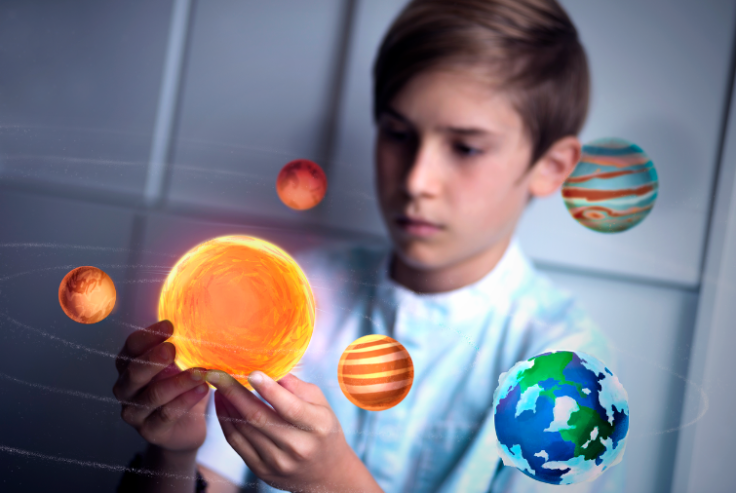Touch-Based AR Like Merge Cube May Define Next-Gen Augmented Reality Technology

Augmented Reality (AR) technology has been in the works for years, but with the advent and popularity of Pokémon Go, it became commonplace. This year, it is expected to gain even more traction, especially since Apple would celebrate its tenth-anniversary with the launch of a new iPhone. The iPhone 8 is expected to feature AR based applications, for which it has already made its ARKit available to developers.
AR essentially has an edge over virtual reality, since it can be accommodated into the user’s everyday surroundings without the needed for isolating the user. However, the next step in AR might hold even more possibilities — transforming the user’s physical environment for an enhanced experience.
Read: AR vs VR: Why Augmented Reality Has A Definite Advantage
Touch-based AR may hold the key to future AR. Essentially, augmented reality currently offers superimposed graphics in an existing environment, captured live using a smartphone camera.
Touch-based AR transforms everyday objects visible in the smartphone’s interface in front of the user’s eyes. This is currently done using devices such as the Merge Cube, which is an AR toy, which can essentially transform in front of user’s eyes, given that the user is seeing it through a smartphone or a specialized headset.
A Merge cube is essentially a plastic cube which a user can hold in his/ her hand. Once you do a merge headset, this cube will transform into anything from a fireball to a TV. It was showcased at Consumers Electronic Show (CES) 2017 in January.
Touch-based AR provides a different experience to a user than traditional AR since the user is not just dependent on his/her smartphone for generating AR experiences and devices such as the Merge Cube add a physical component to an AR environment.
Touch-based AR can provide tools that can harness a user’s and a developer's creativity in much more ways than the traditional AR. The most important part of touch-based AR is AR tracking. For touch-based AR to work, it needs computer vision and holograms to function together with a user’s movement and physical AR components.
Touch-based AR will create a much detailed perspective than currently available AR does.
The applications of this technology might range far and wide from more engaging learning experiences for students to employee training.
AR experiences are currently in a nascent stage, but touch-based AR experiences might be the way to go. Currently, it is being used on devices such as the Merge Cube, but the possibilities are endless.
While both AR and VR started out as gaming technologies for entertaining users with graphical interfaces, both are gaining traction and applications by ingratiating with the physical surroundings of the user.
Read: Microsoft Developing Artificial Intelligence Processor For HoloLens 2
Microsoft’s HoloLens VR headset uses mixed reality VR which virtually embeds holograms on the user’s physical environment in the line of vision making for a realistic VR experience. Touch-based AR which takes the opposite approach by adding a physical component which can help companies create diverse AR experiences.
While the technology is currently in a nascent stage, it has a huge potential for increasing AR applications.
© Copyright IBTimes 2025. All rights reserved.



















